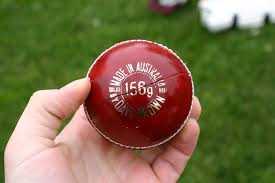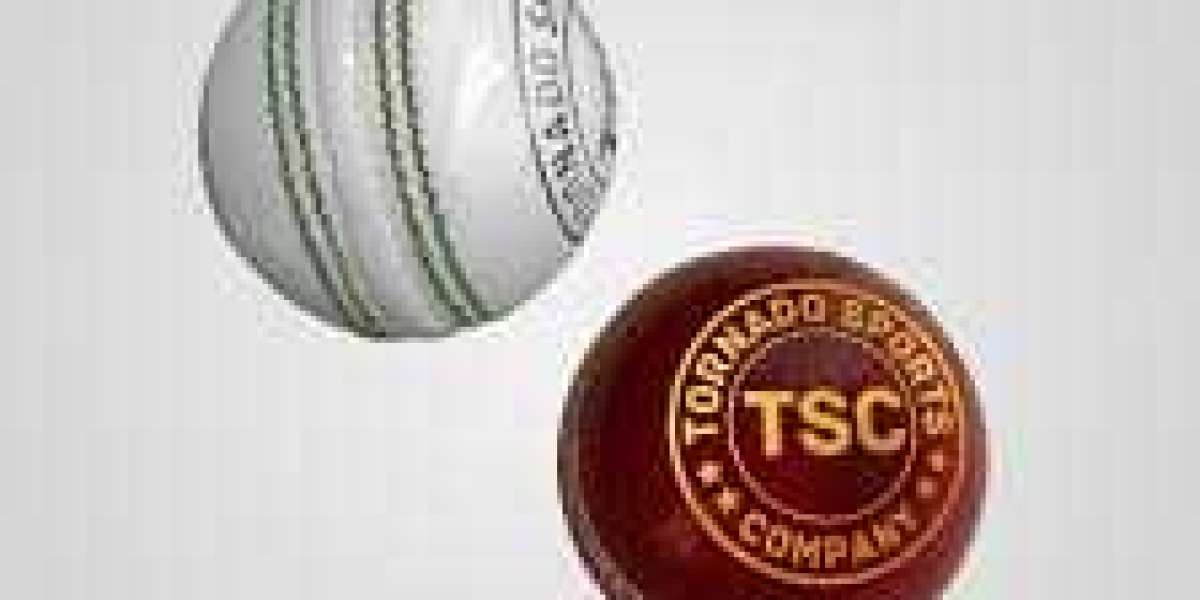What Makes a Cricket Ball?
A cricket of ball is typically made from a hard core, wrapped in layers of string, and encased in a leather covering. The ball is designed to be durable, allowing for consistent bounce and swing, which is essential for both the bowler and the batter. The quality and condition of the cricket ball significantly affect the pace of the game, with the ball's seam, shine, and hardness being key determinants.
Types of Cricket Balls
There are primarily two types of cricket balls used in international cricket: the red ball and the white ball. Each has its own specific advantages and drawbacks, which makes them suited for different formats of the game.
1. Red Cricket Ball
The red cricket ball is most commonly used in traditional formats like Test matches and First-class cricket. It is known for its ability to offer swing, which makes it the preferred choice for bowlers, especially in longer formats of the game. The red ball is easier to see under natural light, making it ideal for daylight play
 .
.
Characteristics of the Red Cricket Ball:
Durability: The red ball remains in better condition for longer durations of play, especially in Test cricket, where the ball is used for extended periods.
Swing: Bowlers can get significant swing from the red ball, especially if it is well-maintained with a shiny side and a rough side. Swinging the ball makes it more challenging for the batsman.
Visibility: The red ball is easier to spot under natural light, providing better visibility for the fielders and batters in day matches.
2. White Cricket Ball
The white cricket ball is used primarily in limited-overs formats like One Day Internationals (ODIs) and Twenty20 (T20) cricket. It is often preferred for night matches due to its visibility under artificial lighting. The white ball, however, tends to wear down faster than the red ball, leading to reduced swing after just a few overs.
Characteristics of the White Cricket Ball:
Brightness: The white ball offers excellent visibility under artificial lighting, making it a popular choice for day-night matches and evening games.
Hardness: White balls are generally harder than red balls, making them travel faster off the bat, which leads to more aggressive batting.
Wear and Tear: The white ball tends to lose its shine quickly, which can affect its performance, especially when it is used for the entire 50 overs in ODIs or 20 overs in T20s.
3. Pink Cricket Ball
Introduced to bridge the gap between the red and white balls, the pink cricket ball has gained popularity in recent years, especially in day-night Test matches. The pink ball is designed to maintain the visibility of the white ball while providing the durability and swing benefits of the red ball.
Characteristics of the Pink Cricket Ball:
Swing: Similar to the red ball, the pink ball offers swing, making it a favorite among bowlers in Test matches played under lights.
Visibility: The pink ball is easier to see under artificial lighting than the red ball, making it ideal for day-night matches.
Durability: The pink ball tends to retain its shine longer than the white ball, making it an excellent choice for day-night Test matches.
4. Training Balls
Apart from the traditional cricket balls used in official games, there are also training balls designed for practice. These balls are often made from synthetic materials, allowing players to practice various skills without using an expensive match ball.
Types of Training Balls:
Rubber Balls: These are lightweight and are often used for throwing and fielding drills.
Soft Balls: Designed for beginners, these balls are softer and less likely to cause injury.
Throw Down Balls: Used for fast-bowling practice, these balls help players practice batting against quick deliveries.
The Construction of a Cricket Ball
A cricket ball consists of several components that work together to provide the desired balance of bounce, swing, and durability:
Core: The core of the cricket ball is made from cork or rubber, giving it its hardness. The core is the part of the ball that directly impacts its bounce and flight characteristics.
Winding: Surrounding the core is a layer of string or yarn, wound tightly to provide the necessary weight and bounce to the ball. The tension of this winding can influence how the ball behaves during play.
Leather Covering: The leather outer layer of the ball is what gives the cricket ball its shape. It is often dyed in red, white, or pink depending on the type of ball. The leather covering is also responsible for the ball’s durability and the level of swing it can generate.
Seam: The seam on the cricket ball plays a critical role in its swing and bounce. A well-maintained seam allows the bowler to get lateral movement through the air. It is important for bowlers to keep one side of the ball shiny and the other rough to maximize swing.
The Impact of Cricket Balls on the Game
The type of cricket ball used can drastically change the dynamics of the game. A new, shiny ball is easier to swing and provides better bounce, making it favorable for bowlers. On the other hand, an old ball with a rough surface offers more assistance to spinners, as they can generate turn by gripping the ball.
Bowler’s Perspective:
Fast bowlers prefer the red ball for its swing and bounce, especially in the early overs.
Spinners find the white ball more difficult to grip, while the red and pink balls provide them with better control.
Batter’s Perspective:
Batsmen prefer a white ball for its visibility, but they struggle with the reverse swing of a well-worn red or pink ball.
The hardness of the white ball also leads to quicker scoring, but it increases the risk of mistimed shots.
Conclusion
The cricket ball is a cornerstone of the sport, influencing both the batting and bowling strategies. Understanding the differences between red, white, and pink cricket balls, along with their impact on the game, helps players make informed decisions about their approach to the game. Whether you are a bowler looking for swing or a batsman preparing for a challenging delivery, the type of ball used can make all the difference in your performance.














